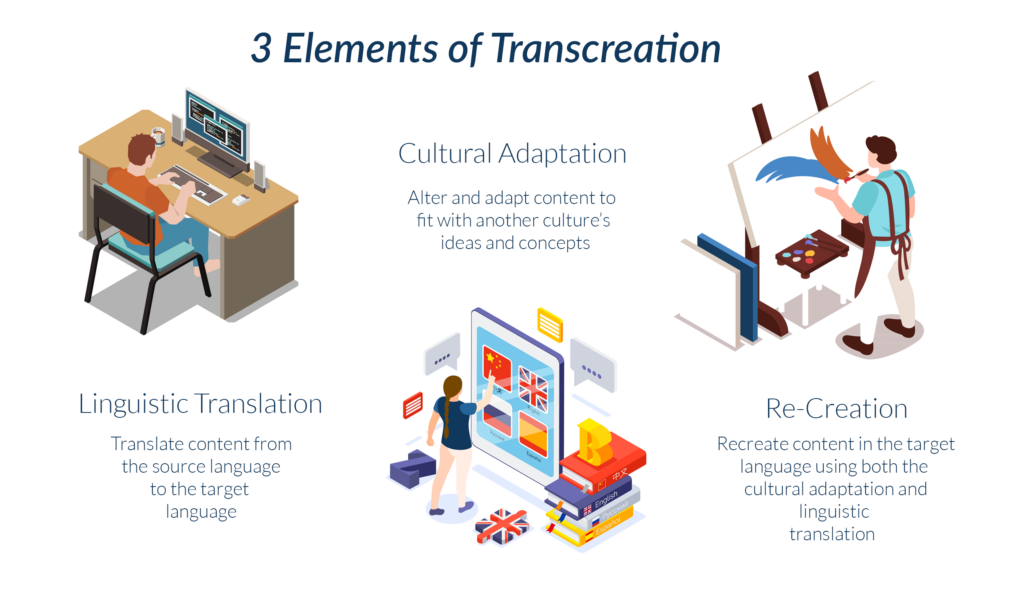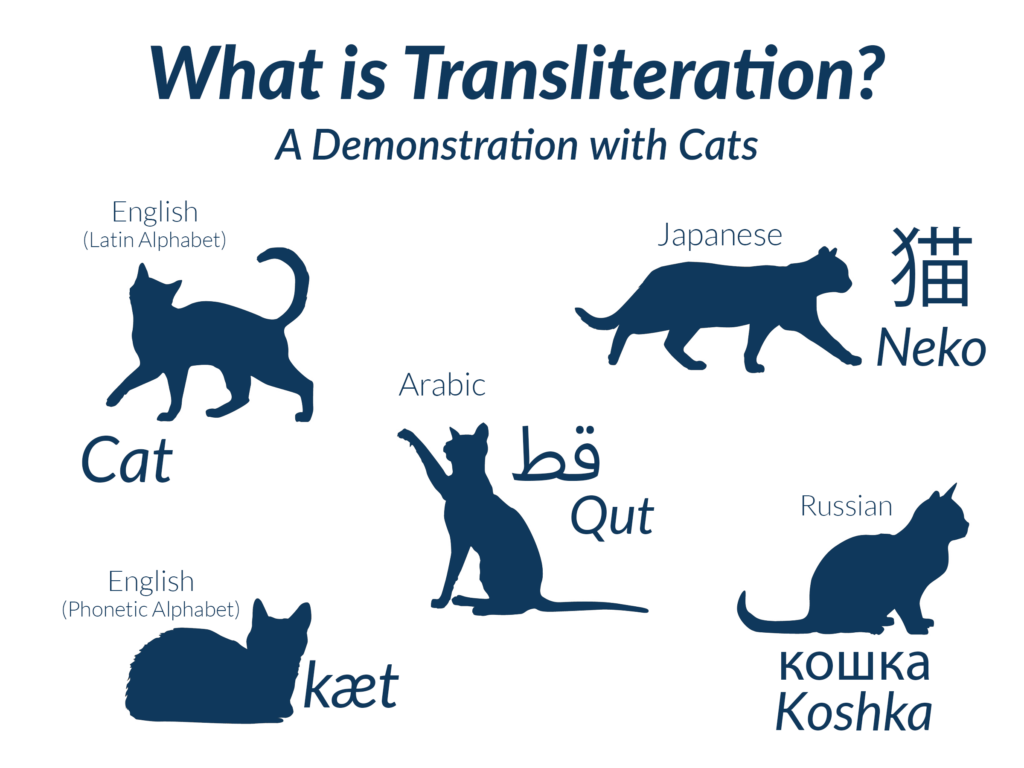When it comes to global expansion, companies and artists utilize many translation styles and techniques, transcreation being one of them. But what is transcreation, and how do you utilize it in a project?
What is Transcreation?
Transcreation is a unique mix of copywriting, creative writing, and translation that people use to share works between languages. Transcreation aims to portray a story or message to people who speak another language without losing the original piece’s tone and intent. If you’ve ever watched the English dub of a show like Pokémon, you’ve likely seen transcreation in action! The famous (or infamous) “jelly donuts” bit is a common example of transcreation at work.
Transcreation vs. Translation
Like translation, transcreation relies on the translator’s knowledge of the source and target languages. However, transcreation takes a more creative approach than translation does. In some languages, translations of words or phrases may not retain the same tone or meaning. For example, the automotive brand Nova doesn’t translate well into Spanish. After all, “no va” means “doesn’t go!”
What is the Difference Between Translation, Localization, and Transcreation?
Between translation, localization, and transcreation, it can be challenging to identify the differences between the three.
- Translation is the process of translating a work to keep it accurate to the original in terms of tone, intent, and text.
- Localization is the process of altering text and imagery within a translated work for it to make sense to the target language’s audience. This could involve changing date and time formats or using different spellings of words.
- Transcreation is the process of translating a work while prioritizing the work’s tone and intent. It may involve completely rewriting portions of a text to ensure that the work retains its emotional value.
What are the Three Elements of Transcreation?

There are three elements of transcreation, as explained in Mar Díaz-Millón’s study, Towards a definition of transcreation: a systematic literature review :
Linguistic Translation
Linguistic translation is the first step of transcreation. It involves translating the work from its source language into the target language.
Cultural Adaptation
After the linguistic translation comes adaptation. At this step, writers work to edit parts of the source material that don’t fit within the target language’s sociology. During cultural adaptation, a creative writer will often join to help ensure the adaptation stays faithful to the original while making sense to local audiences.
Re-Creation
During the re-creation process, writers and translators work together to ensure that the new adaptations to the source material fit the original’s story, tone, and intent. In doing so, they combine the translation with new, adapted content to create something that is, essentially, another version of the work.
Transcreation Examples
Transcreation is everywhere, and if the creators do well enough, you won’t even notice. Here are some examples of transcreation:
Transcreation and Marketing Translation
In marketing, transcreation is often used for slogans, copywriting, and ad campaigns to ensure that a brand maintains a consistent image and favorable reputation among international markets.
Transcreation in Art
Transcreation plays a massive role in adapting art, music, film, and literature into other languages for international audiences. Regardless of what you like to read, watch, or play, you’ve probably encountered a transcreated work without realizing it.
Transcreation in Literature
Classic literature like The Epic of Gilgamesh, Don Quixote, and Hamlet are some of the most commonly transcreated works because they’ve existed for centuries. As pieces of classical literature, these works are often transcreated to make them accessible to international audiences and to preserve them as creative works for future generations. Linguists and archivists often perform these kinds of transcreations to preserve these works.
Popular literature is often subject to transcreation as well: comics, children’s books, and novels can also be transcreated into various languages to reach larger audiences. You’ll find books like the Percy Jackson Series and comics like The Sandman are translated into many different languages and scripts for readers everywhere to enjoy.
Transcreation in Poetry
When it comes to poetry, transcreators must take an extra step to ensure that the transcreated poem fits not only the original’s tone and intent but also its meter and rhyme scheme. Poets spend extensive amounts of time planning out the rhythm and meter of their work and often use specific language to meet their tonal requirements. Transcreators must also choose their language carefully to ensure the adapted poems retain that mood and meter. Poetry anthologies like the English transcreation of Inger Christensen’s Alphabet is one of many examples of such poems.
Transcreation in Music
Transcreation in the music industry works similarly to transcreation in poetry; just like poems, musicians and lyricists spend lots of time focusing on language, how it fits into the lyrics of a song, and how those lyrics work alongside the music’s melodies and harmonies. One of the most essential parts of transcreating a song is matching a lyric’s syllables with the melody’s rhythm. Getting words on-beat can either make or break a tune— ”Stille Nacht,” or “Silent Night” is one of the most translated songs in the world. In English, the syllables line up almost perfectly with the original German counterparts!
Transcreation in Film
Transcreation plays a prominent role in adapting content to fit other cultures. Films like Ponyo and The Ring are incredibly popular in Japan and the United States, although their plots differ slightly. For example, the American adaptation of The Ring takes place in the Pacific Northwest, a more fitting setting than rural Japan to Western audiences. In Ponyo, the setting is left purposefully ambiguous.
Transcreation in Video Games
Major video game franchises don’t always utilize transcreation when developing their titles for other cultures. For example, the cult-classic EarthBound features few changes between the original Japanese writing and its English version. On the other hand, the Xenoblade Chronicles series uses transcreation often, particularly with characterization. In the English release of Xenoblade Chronicles 2, characters from different countries have different accents and even use different colloquialisms!
What is Transliteration?
Sometimes, words or phrases need to be translated into other writing systems. Place names, food items, loanwords, and specific phrases in some languages can’t simply be translated into the target language. In these cases, translators will use transliteration to make these words legible for audiences who can’t read the source language’s writing system. For example, place names like Сибирь don’t make much sense to someone who can’t read Cyrillic. In Latin script, Сибирь roughly transliterates to Siberia.

Transliteration relies on extensive knowledge of multiple alphabets and the phonetics associated with each symbol. While transliteration doesn’t explain the meaning of a word or literally translate it into another language, it shows others how to pronounce the word using symbols they are already familiar with. It’s an excellent tool for sharing cultural knowledge to people who use different writing systems!
Do You Need a Transcreator?
Do you need help with a transcreation project? Traduality offers access to thousands of vetted and accredited translators, interpreters, and transcreators. Create your first project today and find vetted translators, or book a meeting with us to learn more about your specific needs to get started!
Updated 2/21/2024.





0 Comments